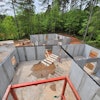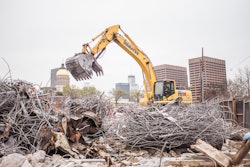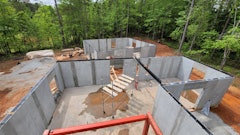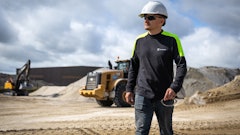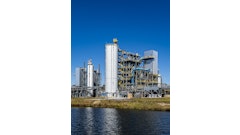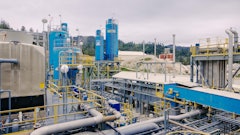
Information from this article was first published in Demolition Magazine and is being reused with permission from the National Demolition Association.
By Katie Condon
Pete Smerud, the executive director of Wolf Ridge Environmental Learning Center, was told by three contractors that it couldn’t be done. The challenge: Revamp Wolf Ridge’s land, facilities and curriculum, while also satisfying the rigorous requirements of Living Building Challenge (LBC). To do so, every phase of the project — including demolition of the standing facilities — had to be as environmentally sustainable as possible.
 Piece by piece, LCS workers deconstructed the structures and source-separated on-site to maximize recycling rates.
Piece by piece, LCS workers deconstructed the structures and source-separated on-site to maximize recycling rates.
With the goals of innovation and continued leadership in mind, Smerud and the board of trustees decided it was not enough to simply meet LEED certification requirements for this project; they decided to seek full certification in all seven sustainability requirements of the Living Building Challenge aim, making it approximately the 45th building in history to do so. To date, only 10% of 450 projects that have attempted the challenge have been successful.
While many contractors shied away from the project, NDA member Lloyd’s Construction Services (LCS) took the challenge head-on. A third-generation family business servicing Minnesota for 34 years, LCS was excited to be awarded this unique demolition contract. Many within the LCS company visited this learning center themselves as children, and they are now sending their own children and grandchildren. While the personal connection increased the company’s passion for the project, they also had the expertise to get the job done. “Lloyd’s accepted the challenge and went above and beyond to make sure the maximum amount of waste was diverted,” Smerud says. To do this was no easy feat.
Minimizing waste in a remote location
 All the lumber was reused with 23.04 tons donated to a local school in Minnesota.
All the lumber was reused with 23.04 tons donated to a local school in Minnesota.
Concerns for safety
While many of the general safety concerns were present — fall protection, confined space entry, normal PPE practices — personal protection was a unique component of the project, thanks to the wilderness of northern Minnesota. There was an increased likelihood of contracting illness and injury from biting insects and nearby predators. Because the workers were more familiar with safety issues in urban settings, the company ensured that wilderness risk awareness was brought to the forefront. Another concern was that the nearest major medical facility was 70 miles from the jobsite. It was crucial for workers to know first aid and be educated on injury prevention, especially when encountering wild creatures.
Going above and beyond
The renovation project had a lofty objective of 90% landfill diversion, which was difficult considering its isolated location. During the demolition phase, Lloyd’s took the extra time to ensure that environmental impact would be minimal. The company’s extensive knowledge in selective demolition helped it meet both architectural and environmental goals. Every aspect of resource utilization was considered — from reducing its carbon footprint with electric boom lifts and other equipment to communicating via electronics or recyclable paper. PVC, chrome and other harmfully processed products were banned from the site as well, so as not to preemptively bring in any materials that hurt the environment
 The Living Building Challenge requires every phase of a project to be as environmentally sustainable as possible.
The Living Building Challenge requires every phase of a project to be as environmentally sustainable as possible.
Environmental stewardship locally and globally
The LBC encourages contractors to think of the impact of construction and demolition assignments on a larger scale, which the Wolf Ridge project perfectly exemplifies. In total, the crew was able to recycle 32.41% of recyclable materials, which is quite a high percentage to hit considering the lack of nearby recycling facilities. Also, 23.04 tons of lumber were donated to a local school in Finland, MN. LCS is “extremely enthusiastic about this project,” says John Lloyd.

